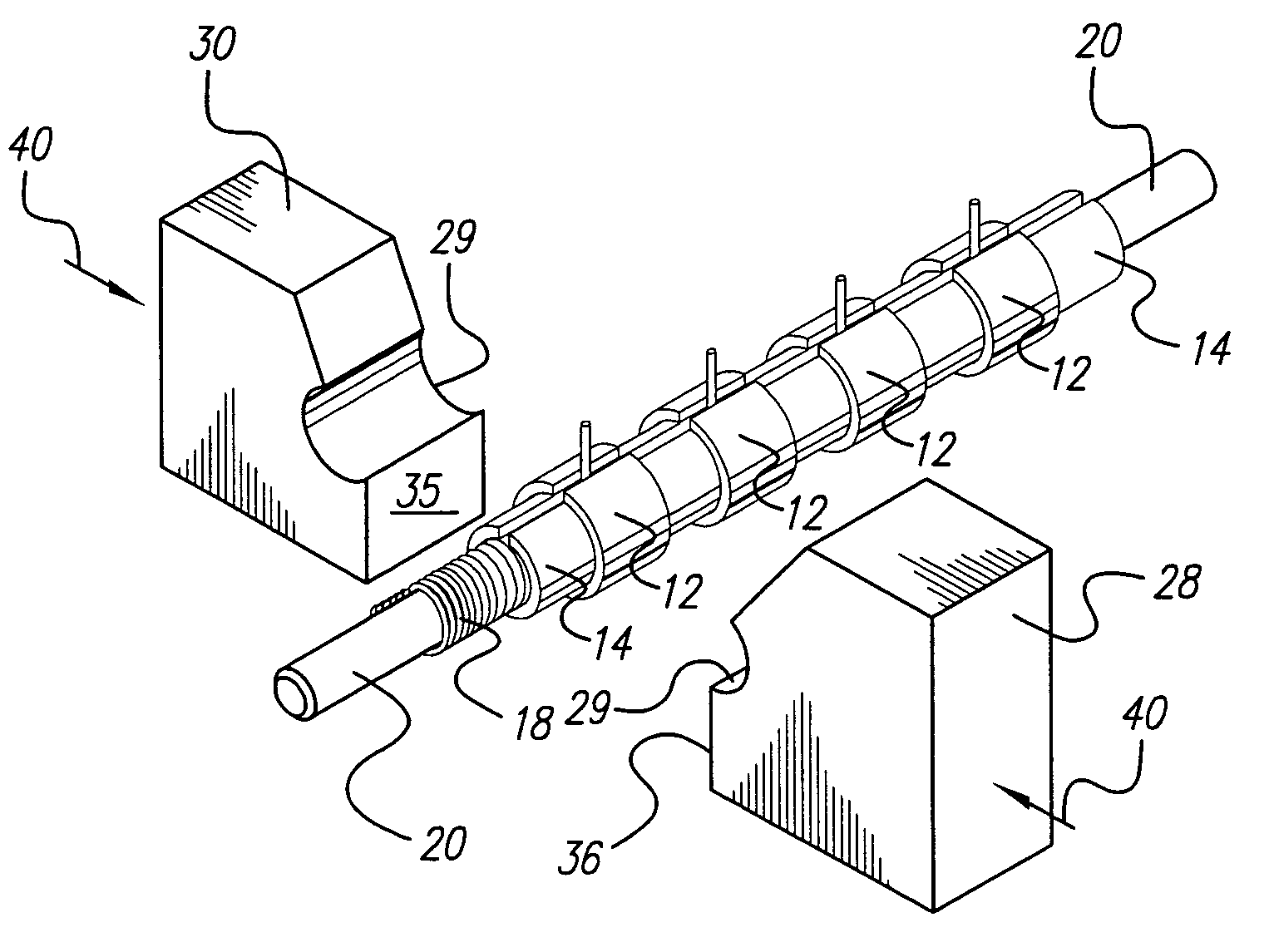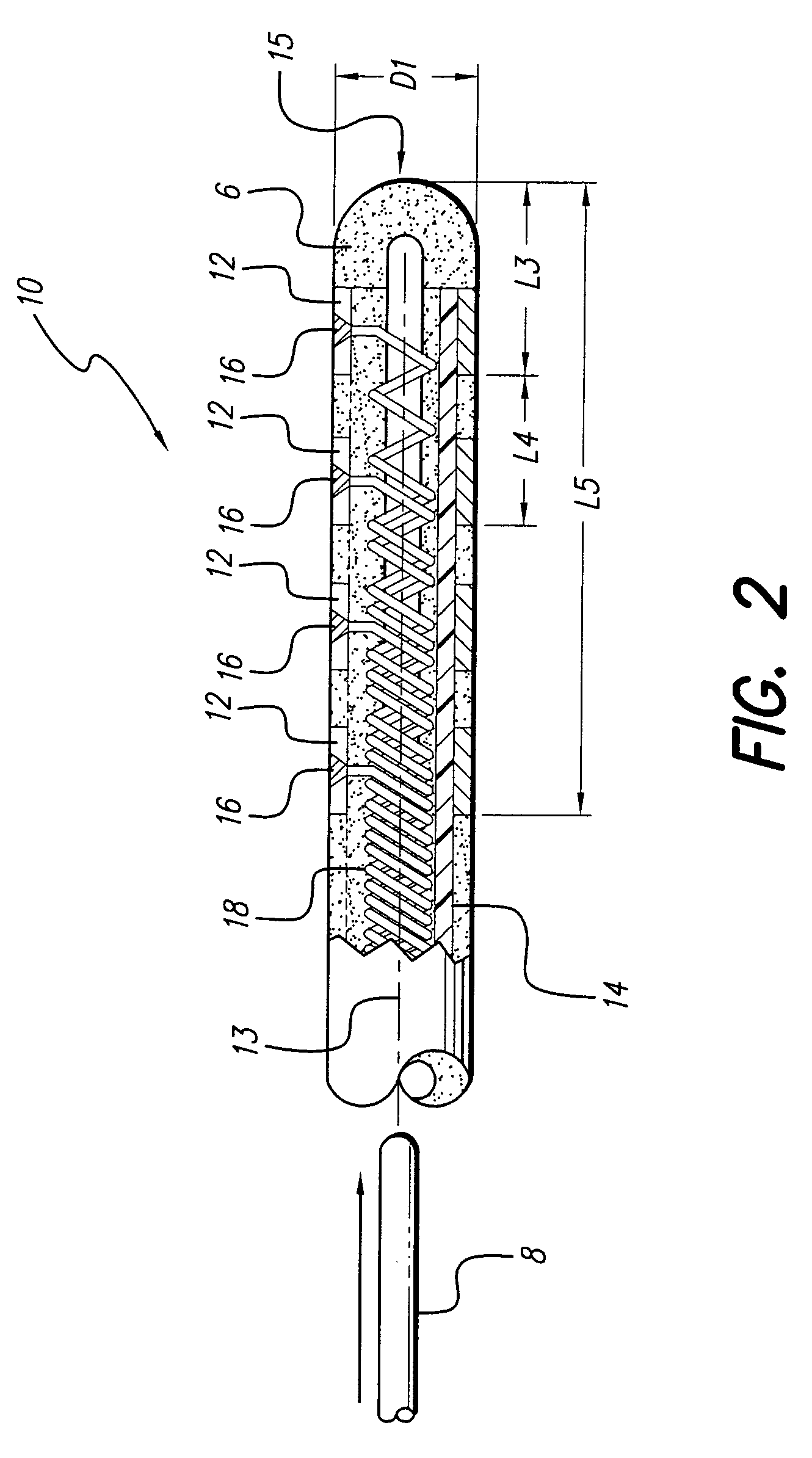Band type multicontact electrode and method of making the same
- Summary
- Abstract
- Description
- Claims
- Application Information
AI Technical Summary
Benefits of technology
Problems solved by technology
Method used
Image
Examples
Embodiment Construction
[0033]The following description is of the best mode presently contemplated for carrying out the invention. This description is not to be taken in a limiting sense, but is made merely for the purpose of describing the general principles of the invention. The scope of the invention should be determined with reference to the claims.
[0034]The invention described herein teaches a manufacturing technique for an implantable electrode array having multiple ring (or band) contacts. Typically, each ring or band contact is evenly spaced along the longitudinal axis of the lead, although unevenly spaced contacts could also be made.
[0035]FIG. 1 shows a preferred embodiment of an electrode array 10 with four ring contacts 12 made in accordance with the invention. The number of contacts can vary depending on the purpose for which the electrode array is to be used. The electrode array of the present invention may be used with any suitable implantable pulse generator, and may have as few as one conta...
PUM
| Property | Measurement | Unit |
|---|---|---|
| Length | aaaaa | aaaaa |
| Force | aaaaa | aaaaa |
| Flexibility | aaaaa | aaaaa |
Abstract
Description
Claims
Application Information
 Login to View More
Login to View More - R&D
- Intellectual Property
- Life Sciences
- Materials
- Tech Scout
- Unparalleled Data Quality
- Higher Quality Content
- 60% Fewer Hallucinations
Browse by: Latest US Patents, China's latest patents, Technical Efficacy Thesaurus, Application Domain, Technology Topic, Popular Technical Reports.
© 2025 PatSnap. All rights reserved.Legal|Privacy policy|Modern Slavery Act Transparency Statement|Sitemap|About US| Contact US: help@patsnap.com



